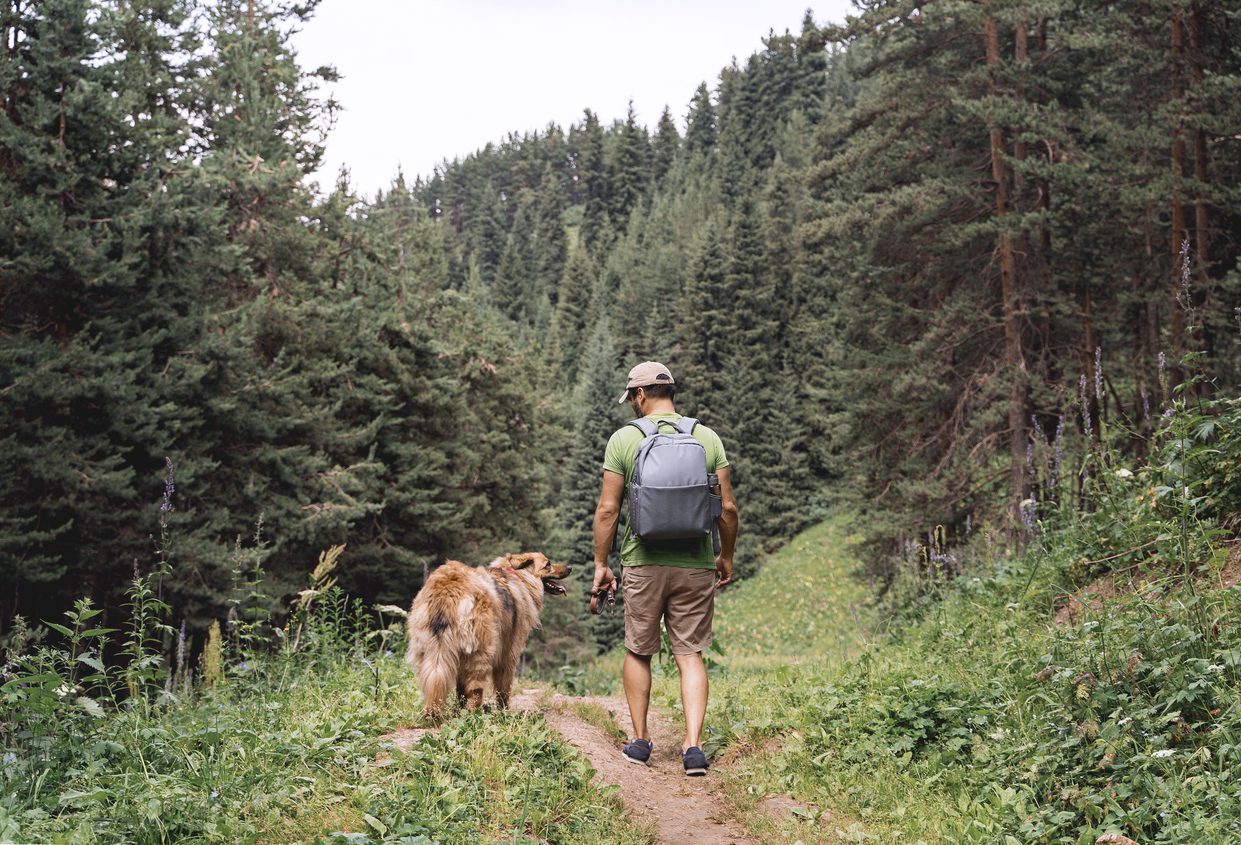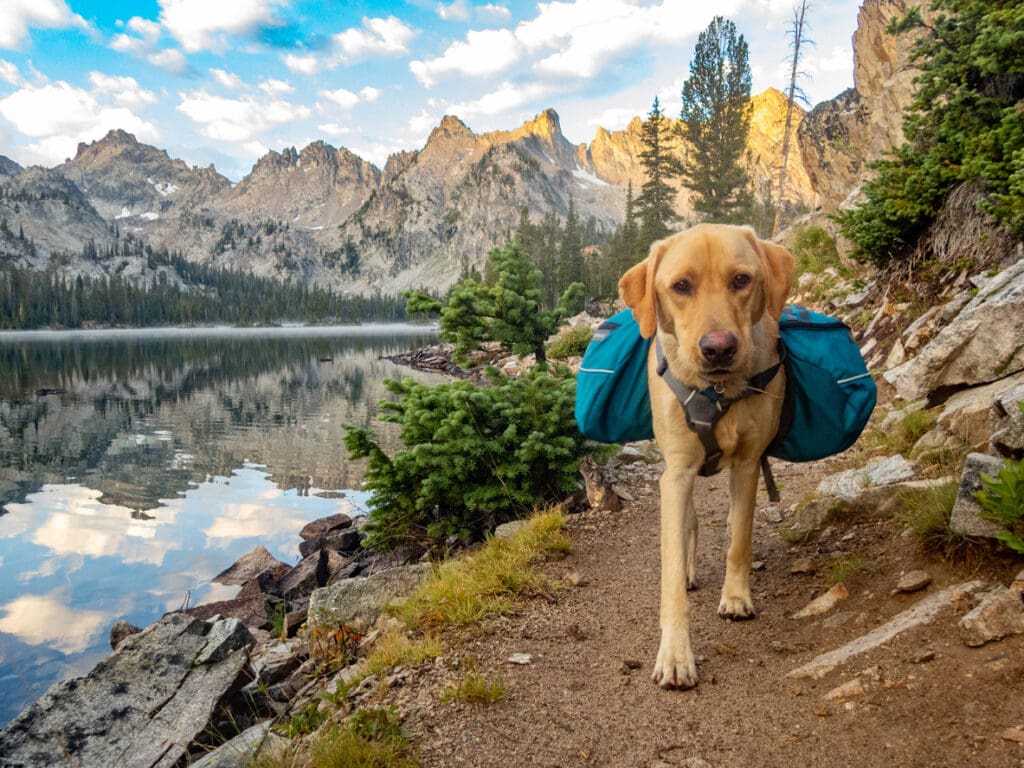Summer hiking with dogs can be one of life’s greatest joys. It’s an excellent way to enjoy the outdoors with your dog, provided you take the right precautions. But as the temperature rises, so do the risks. For dog owners, understanding the dangers of summer hiking is essential to keeping your furry companion healthy, happy, and safe on the trail, whether you’re planning a weekend adventure or a quick walk on a local hiking trail., Here’s what to know.
Why Summer Poses Greater Risks for Dogs
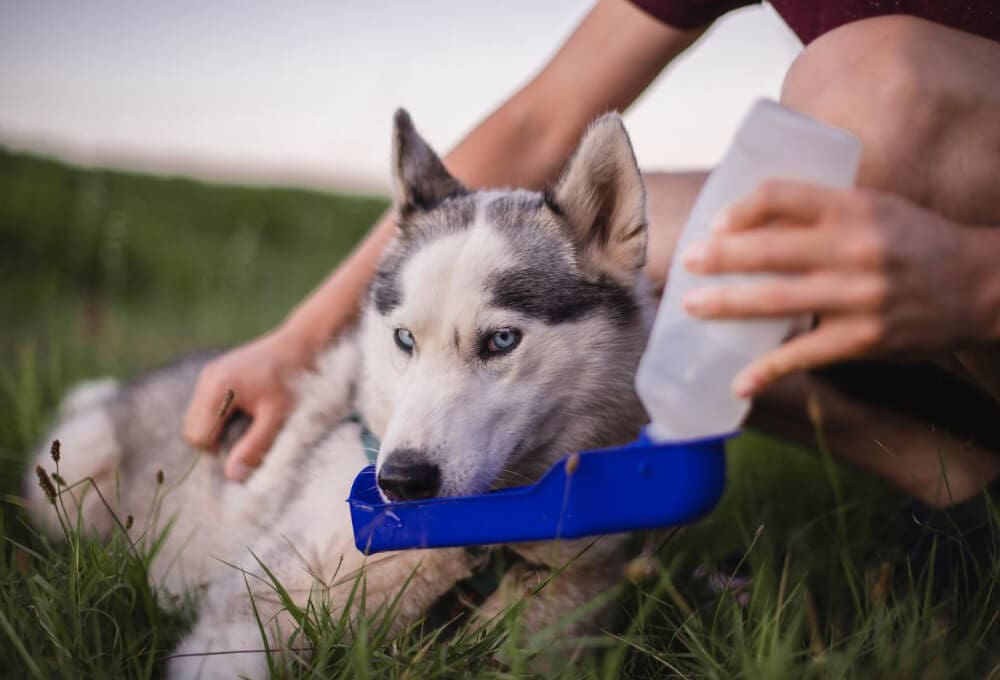
During hot months, your pup faces more than just heat—your dog's specific needs and vulnerabilities require extra attention. Common trail hazards include snakes, foxtails, poisonous plants, sharp rocks, and wildlife encounters—not to mention the ever-present threat of hot weather and hot surfaces burning your dog's paws, especially on a hot day.
Many dogs are eager to hit the trail, but not everyone realizes that dogs are at higher risk of overheating than humans. Because dogs cool themselves differently, their body temperature can spike dangerously fast.
Gradual walking on rough terrain can help condition your dog's paws, much like how humans build up resilience by walking barefoot.
Pre-Hike Preparations
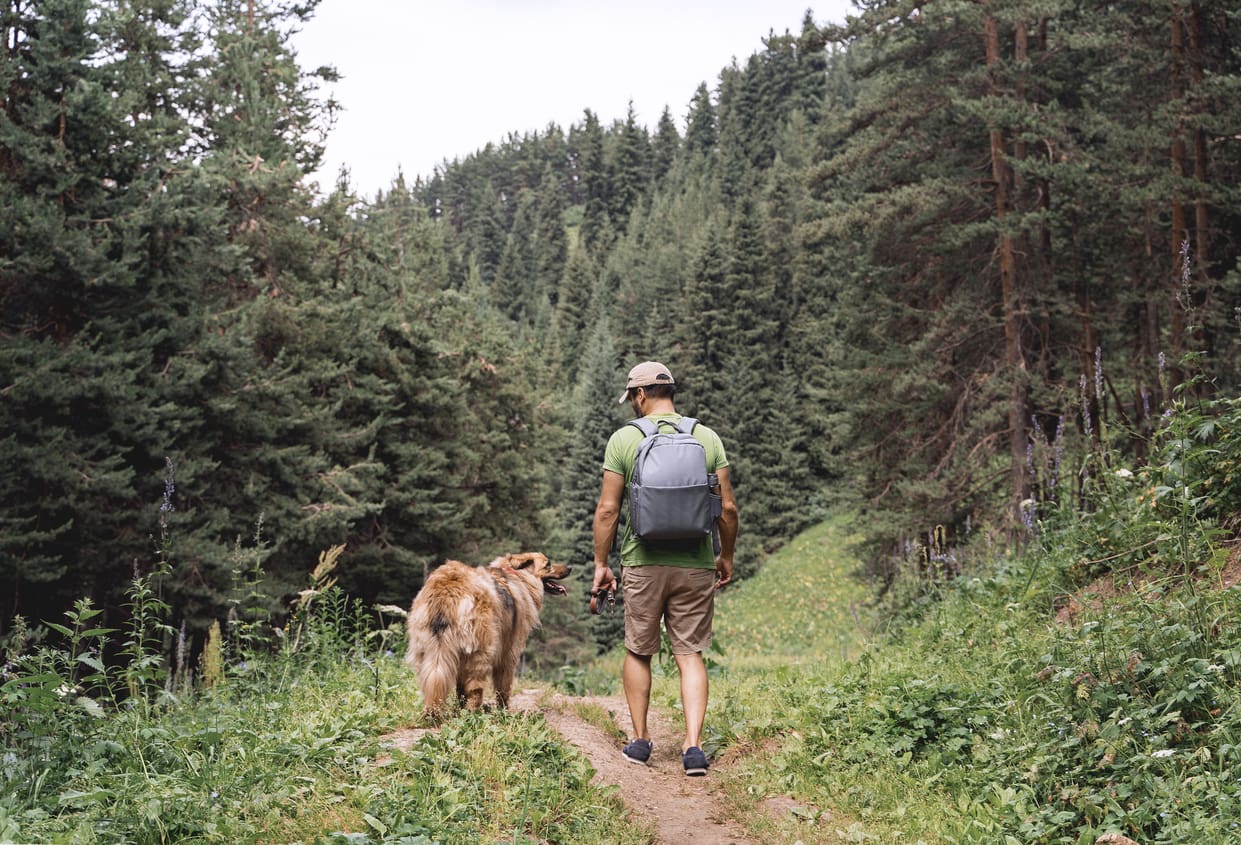
Before you and your furry friend hit the trail, a little planning goes a long way toward a safe and enjoyable adventure. As a responsible dog owner, start by checking in with your veterinarian—especially if your dog is older, has health concerns, or hasn’t hiked in hot weather before. Your vet can offer tips on how to keep your dog cool and recommend any necessary vaccinations or preventatives, like flea, tick, and heartworm protection.
Packing is key: bring a well-stocked doggie first aid kit with essentials such as bandages, antiseptic wipes, tweezers, and any medications your dog may need. Don’t forget a sturdy leash, plenty of fresh water, and a portable water bowl to keep your dog hydrated. Healthy snacks for both you and your pup can help maintain energy levels on the trail. By preparing ahead and packing the right gear, you’ll be ready to handle common trail hazards and ensure a safe, fun hike for both you and your dog.
Choosing Dog Safe Trails

Selecting the right trail is crucial for your dog’s safety and comfort. As a dog owner, look for trails that are clearly marked as dog-friendly and avoid those with steep drop-offs, sharp rocks, or areas known for poisonous plants. Shaded trails are ideal, especially on hot days, as they help keep your dog cool and reduce the risk of heat stroke.
Be mindful of potential wildlife encounters, such as snakes or other animals, and always keep your furry companion on a leash to prevent unexpected run-ins. Before heading out, check with local park rangers or hiking organizations for updates on trail conditions and any recent reports of hazards. By choosing dog-safe trails and staying aware of your surroundings, you’ll help ensure a safe and enjoyable hiking experience for both you and your dog.
Higher Risk Trails: What to Watch For
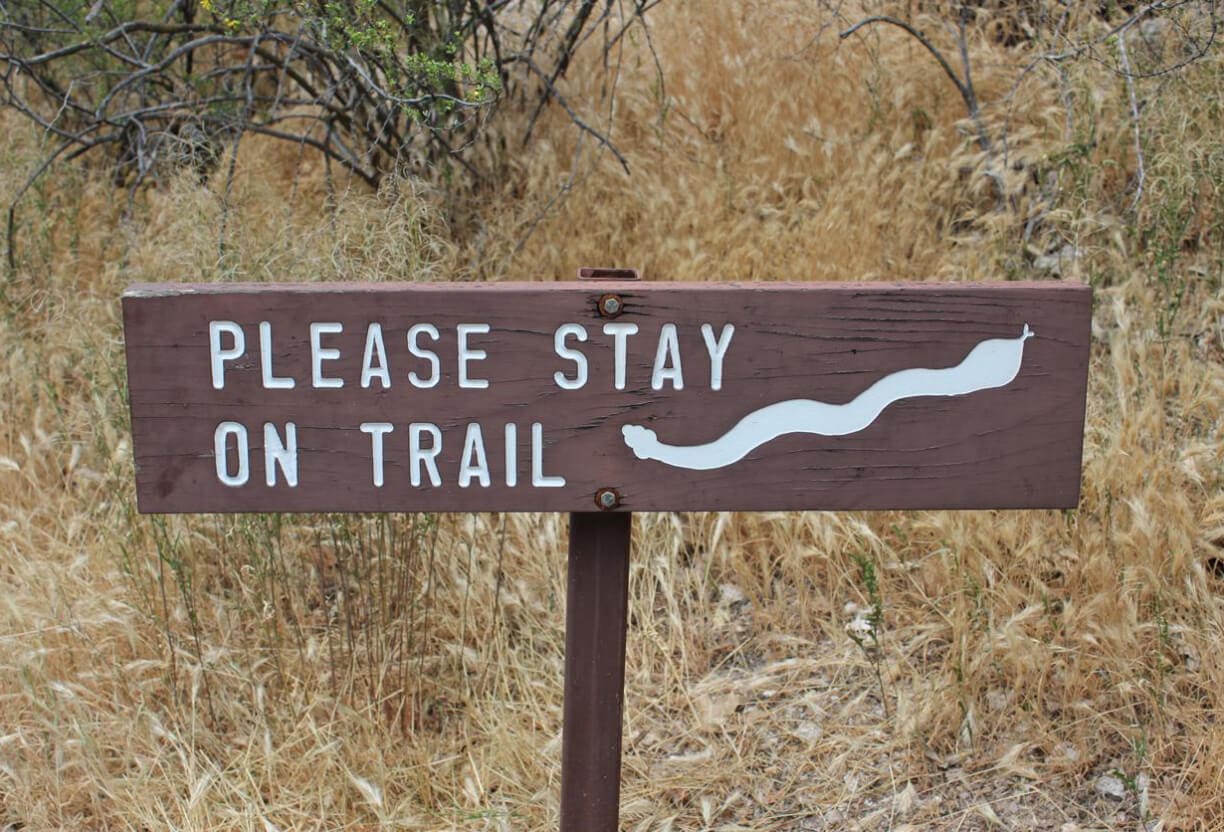
Some hiking trails come with extra challenges that can put your dog at higher risk. Trails with venomous snakes, steep or rocky terrain, or fast-moving water require extra caution. As a dog owner, always keep your dog close on a short leash and stick to marked trails to minimize the chance of wildlife encounters or getting lost.
Pay close attention to your dog’s body language—signs of stress, fatigue, or discomfort mean it’s time to take a break or turn back. If you spot a snake or other
Foxtails, Snakes, and Other Trail Hazards
Foxtails are small barbed grass seeds that can lodge in your dog’s ears, paw pads, nose, or throat, sometimes requiring surgical removal. Meanwhile, snake bites—especially rattlesnake bites—can be life-threatening. If your dog shows swelling, weakness, or unusual behavior after a hike, seek a veterinarian immediately.
While hiking, your dog may encounter wildlife such as snakes or other animals, so it’s important to take precautions like keeping your dog on a leash to prevent dangerous encounters.
Also, be mindful of poisonous plants, wildlife, and sharp rocks, all of which can injure your furry friend.
Marked trails and shaded trails are your best bet for minimizing contact with these hazards.
Heat-Related Dangers

One of the most serious summer hiking dangers for dogs is heat stroke. Even a cool day can be deceptive, as hot days, hot surfaces, and high body weight make it harder for dogs to regulate temperature. Your dog’s safety depends on your ability to recognize early signs of overheating: excessive panting, drooling, disorientation, or collapse.
Keep your dog safe by:
- Avoiding the hottest parts of the day
- Choosing shaded trails
- Taking frequent breaks and allowing your dog to rest, especially if they show signs of fatigue or heat stress
- Carrying fresh water and a collapsible water bowl
- Letting your dog cool off in cool water or shade
Essential Safety Gear

Pack a pet-specific first aid kit with items like antiseptic wipes, tweezers, and bandages, as injuries can get worse if not treated promptly. Your own first aid kit should also include supplies for treating your pet's paw pads or insect bites. Pet owners should be prepared with the right gear and knowledge before hitting the trail to ensure the safety of their pets and themselves.
Don’t forget:
- Leash (to stay close and avoid wildlife, and to be considerate of other hikers and pets on the trail)
- Aid kit
- Plenty of fresh water (never let your pets drink from a natural water source, as these water sources can be contaminated)
- Cooler parts of the trail, if possible
- A hiking buddy (hiking solo with a dog can be risky)
Regular walks and hikes help condition pups for longer outdoor adventures.
Vet-Approved Advice for Trail Safety

Before heading out, check with your veterinarian—especially if your dog is a senior or has health concerns. Veterinary medicine professionals can provide specific advice for your dog’s breed, age, and fitness level.
It’s also important to keep your dog calm and under control during hikes to ensure safety for both your dog and others on the trail.
If your dog is bitten by a snake, shows signs of overheating, or displays excessive panting, disorientation, or vomiting, seek a vet or veterinarian ASAP.
Final Thoughts
Whether your furry friend is new to hiking or a seasoned trail explorer, the key to dog safety on trails is preparation. Choose shaded trails, bring more water than you think you'll need, keep your dog close, and always watch for signs of trouble.
By planning ahead and staying alert to common trail dangers for dogs, you can ensure that both you and your pooch enjoy safe, memorable summer adventures.
🌞 Summer Hiking with Dogs: FAQ
- Why is summer hiking riskier for dogs than other seasons?
Summer heat, hot surfaces, and increased exposure to wildlife and trail hazards like snakes and foxtails make warm-weather hikes especially risky. Dogs are more prone to overheating and can’t cool off as efficiently as humans. - What are the signs of heat stroke in dogs while hiking?
Watch for:
- Excessive panting or drooling
- Disorientation or wobbling
- Lethargy or collapse
- Vomiting
If you notice any of these symptoms, move your dog to a shaded area, cool them down, and seek veterinary care immediately.
- What is a foxtail, and why is it dangerous?
Foxtails are barbed grass seeds that can burrow into your dog’s skin, ears, nose, or paws. Left untreated, they can cause infection or require surgical removal. Check your dog after hikes, especially in dry, grassy areas. - Should I worry about snakes while hiking with my dog?
Yes. Venomous snakes like rattlesnakes are a real danger on many trails. Keep your dog on a short leash, stay on marked paths, and avoid letting them roam in tall grass or underbrush. - How can I keep my dog cool on summer hikes?
- Hike early in the morning or late evening.
- Choose shaded trails
- Take frequent breaks
- Carry extra water and a collapsible bowl.
- Use cooling gear like swamp cooler vests.
- Let your dog wade or rest in cool water (when safe)
- Can my dog drink from natural water sources?
It’s not recommended. Streams, lakes, or puddles may contain harmful bacteria or parasites. Always bring fresh, clean water for your dog. - What gear should I pack for hiking with my dog in summer?
Essentials include:
- Leash and secure harness
- Pet-specific first aid kit
- Collapsible water bowl and extra water
- Paw wax or boots
- Cooling vest or lightweight jacket
- Healthy snacks and treats
- Tick/flea preventatives
- How do I choose a dog-safe trail in hot weather?
Look for:
- Trails labeled as dog-friendly
- Shaded routes with minimal elevation gain
- Areas without fast-moving water or steep drops
- Local updates about trail conditions or wildlife sightings
- What should I do if my dog gets injured or shows distress?
Stop hiking immediately. Provide shade, water, and first aid as needed. For injuries like cuts, swelling, or suspected bites, contact a vet as soon as possible. In the case of snake bites or overheating, seek emergency care. - Should I talk to my vet before hiking with my dog?
Absolutely. Especially for senior dogs, breeds prone to heat sensitivity, or dogs with health issues. Your vet can recommend vaccinations, safety tips, and whether your dog is ready for summer trail activity.

